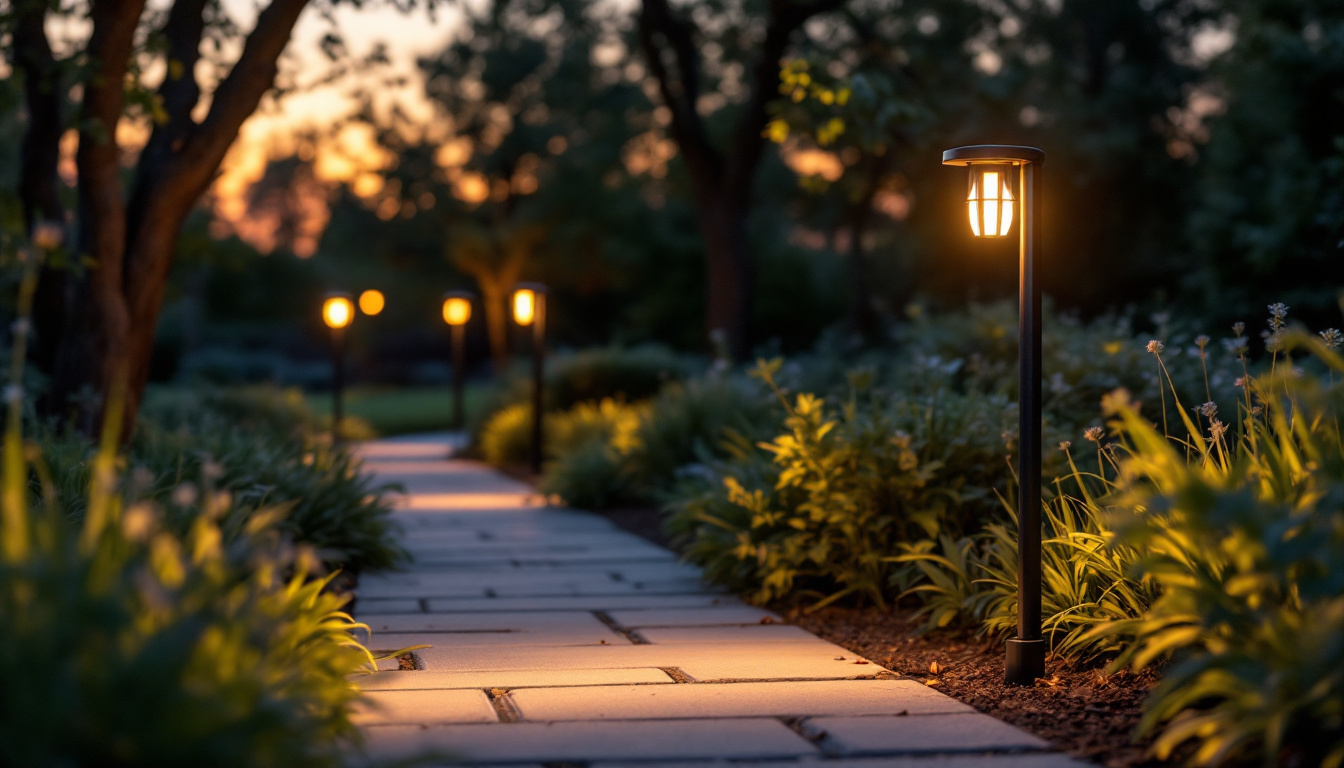
Path lighting is an essential aspect of outdoor design, providing both functionality and aesthetic appeal. As lighting contractors delve into the world of path lights, they often encounter a variety of questions that can help them better serve their clients. This article aims to address some of the most common inquiries surrounding path lights, offering insights into design, installation, and maintenance.
Path lights are outdoor fixtures designed to illuminate walkways, gardens, and other outdoor spaces. Their primary purpose is to enhance visibility and safety during nighttime, but they also contribute significantly to the overall ambiance of a property. By casting soft, inviting light, they can create a warm and welcoming atmosphere, guiding guests through your outdoor spaces while showcasing the beauty of your landscaping.
There are several types of path lights, each with unique features and benefits. The most common types include:
Path lights play a crucial role in enhancing safety around a property. By illuminating walkways and potential hazards, they help prevent accidents and injuries. Properly placed path lights can guide visitors safely to their destinations, reducing the risk of trips and falls. Furthermore, the strategic placement of these lights can highlight uneven surfaces, steps, or changes in elevation, ensuring that everyone can navigate your outdoor spaces with confidence.
In addition to improving visibility, path lights can also deter unwanted visitors. A well-lit property is less appealing to intruders, making path lighting a valuable security feature. The presence of light can act as a psychological barrier, as criminals often prefer to operate in darkness. Moreover, many modern path lights come equipped with motion sensors, which can provide an added layer of security by illuminating areas only when movement is detected, thereby conserving energy while still maintaining safety.
Moreover, the aesthetic appeal of path lights should not be overlooked. They can be used to highlight specific features of your landscape, such as unique plants, sculptures, or water features, creating a visually stunning nighttime environment. By choosing path lights that complement the architectural style of your home and the natural elements of your garden, you can transform your outdoor space into an enchanting oasis that invites exploration and enjoyment after the sun goes down.
When planning a path lighting project, several design considerations come into play. These factors can significantly impact the effectiveness and aesthetic appeal of the lighting scheme.
The placement of path lights is critical for achieving optimal illumination. A general rule of thumb is to space lights about 6 to 8 feet apart. This spacing ensures that the light is evenly distributed without creating overly bright or dark spots.
Contractors should also consider the height of the fixtures. Typically, path lights are installed at a height of 12 to 24 inches. This height allows for adequate illumination while minimizing glare for pedestrians.
The color temperature of path lights can significantly influence the ambiance of an outdoor space. Warmer color temperatures (2700K to 3000K) create a cozy and inviting atmosphere, making them ideal for residential settings. Cooler temperatures (4000K and above) provide a more modern and vibrant feel, suitable for commercial applications.
Contractors should discuss color temperature options with clients to ensure the lighting aligns with their preferences and the overall design of the property.
Installing path lights requires careful planning and execution to ensure a successful outcome. Here are some essential tips for contractors to consider during the installation process.
Before starting the installation, contractors should gather the necessary tools, including:
For low-voltage path lights, proper wiring is crucial for safety and functionality. Contractors should follow these steps:
Regular maintenance is essential to ensure path lights operate effectively and maintain their appearance over time. Contractors should educate clients on the best practices for maintaining their path lighting systems.
Maintaining path lights involves several key tasks:
Contractors recommend inspecting path lights at least twice a year. This schedule allows for timely maintenance and ensures that the lighting system remains functional and aesthetically pleasing.
Understanding the costs associated with path lighting is essential for contractors to provide accurate estimates to clients. Several factors influence the overall cost of a path lighting project.
The cost of path lighting can vary based on several factors, including:
To provide clients with accurate estimates, contractors should conduct a thorough site assessment. This assessment should include evaluating the layout, determining the number of fixtures needed, and considering any unique challenges that may arise during installation.
Additionally, offering clients a range of options can help them make informed decisions based on their budget and preferences.
Even with proper installation and maintenance, issues can arise with path lighting systems. Understanding common problems and their solutions can help contractors address client concerns effectively.
Some common issues that may arise include:
If issues persist despite troubleshooting efforts, it may be time to seek professional assistance. Complex wiring problems or electrical issues should always be handled by a qualified electrician to ensure safety and compliance with local codes.
As technology continues to evolve, new trends in path lighting are emerging. Staying informed about these trends can help contractors offer innovative solutions to clients.
Smart path lighting systems are gaining popularity, allowing homeowners to control their outdoor lighting through mobile apps or voice-activated devices. These systems can be programmed to adjust brightness levels and schedules, enhancing convenience and energy efficiency.
Contractors should consider incorporating smart lighting options into their offerings, as many clients are increasingly interested in home automation and energy-saving solutions.
Another trend is the integration of path lighting with overall landscape design. By collaborating with landscape architects and designers, contractors can create cohesive outdoor spaces that highlight features while providing necessary illumination.
Using path lights to accentuate plants, trees, and architectural elements can elevate the aesthetic appeal of a property, making it more inviting and visually stunning.
Path lights are a vital component of outdoor lighting, enhancing safety, functionality, and aesthetics. By addressing common questions and concerns, lighting contractors can better serve their clients and ensure successful path lighting projects. From understanding the types of path lights available to exploring emerging trends, staying informed is key to providing exceptional service in this ever-evolving field.
As the demand for outdoor lighting solutions continues to grow, contractors who prioritize education and adaptability will find themselves well-positioned to meet the needs of their clients and thrive in the competitive landscape of lighting design and installation.
Ready to enhance your path lighting projects with superior quality and value? Look no further than LumenWholesale, where we offer an extensive selection of spec-grade lighting products at unbeatable wholesale prices. Say goodbye to middleman markups and hello to reliable, high-performance lighting that meets the highest industry standards. With free shipping on bulk orders, you can trust that you’re getting premium lighting at the best price, without any hidden fees. Elevate your outdoor lighting designs with the perfect blend of quality, affordability, and convenience. Wholesale Lighting at the Best Value is just a click away.

Discover essential insights into ceiling fan parts replacement and compliance standards.

Discover how Eti Solid State technology is revolutionizing the lighting industry and empowering contractors to secure more bids.

Discover the subtle yet impactful differences between 4000K and 5000K lighting as seasoned contractors reveal their secrets to mastering the perfect ambiance.

Explore the transformative journey of brackets for light fixtures in the lighting industry.